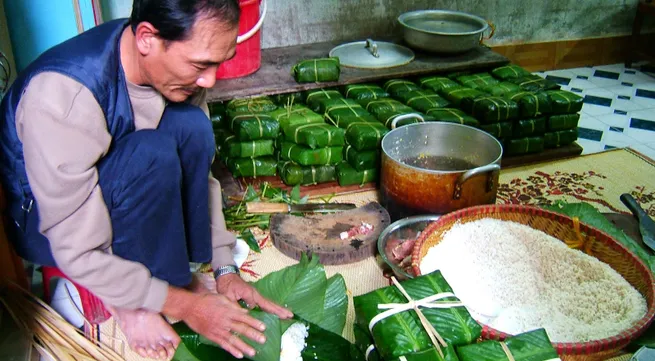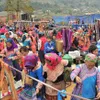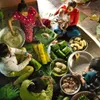Chung Cake village bustles before Tet

All the households in the village are rushing to prepare ingredients and make Chung Cakes. Thuy’s family has 6 generations dedicated to making the iconic Chung Cake. The end of the lunar year is traditionally always the busiest time of the year. All of her family members give a helping hand in the business. However, she still has to hire more people in order to deliver products to customers on time.
Tran Thi Van Thuy, Tranh Khuc Ward, Duyen Ha Commune, Thanh Tri District, Hanoi said: Our family started preparing for Tet back in mid-January. Obviously sales of Chung Cakes are far higher in the run-up to the Tet holiday. So we make about 2 to 3 thousand cakes a day. On normal days, we’d make just 50 to 60.
Thuy’s family is one among 215 households commercially producing Chung Cakes in Tranh Khúc. The traditional cake is the main source of income. At the end of the lunar year, the village produces a huge amount of the traditional cake.
Nguyen Dang Huan, Chairman, Duyen Ha Commune People’s Committee, Thanh Tri District, Hanoi said: This year, the village has produced around 345 thousand cakes with estimated revenue of over 624 thousand USD. This village alone accounts for 34.6% of the commune’s total income.
Luckily for producers, ingredient prices have remained largely stable. Therefore, the retail price remains largely unchanged, at around 1.35 to 2.25 US dollars a cake.
Nguyen Thi Thu, Tranh Khuc Ward, Duyen Ha Commune, Thanh Tri District, Hanoi said: This year, only the price of meat increased. The other ingredients remained unchanged. So we’re selling the cakes at the same price as last year.
Tranh Khuc Village’s Chung Cakes have been sold throughout Vietnam and exported to other countries. However, the small scale of production and securing reliable outlets remains an issue for the village and local authorities to resolve in order to maintain and promote this festive traditional craft.
Tags:





